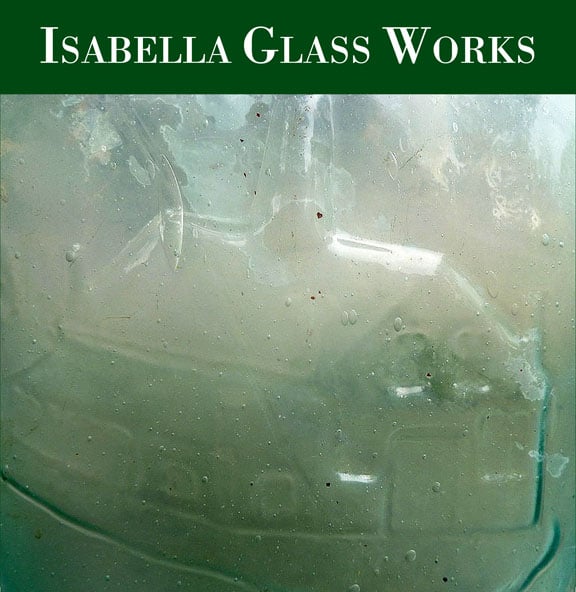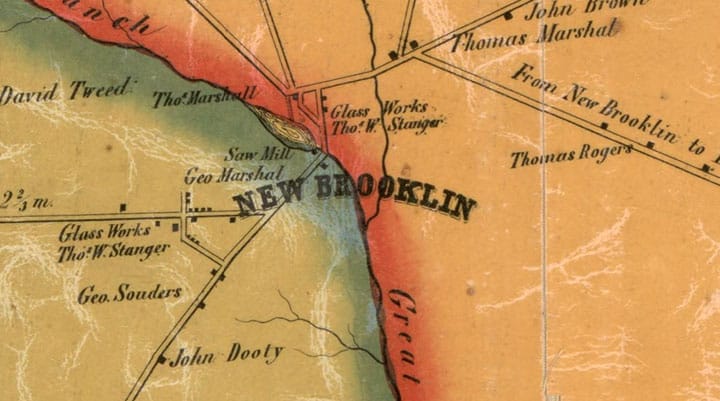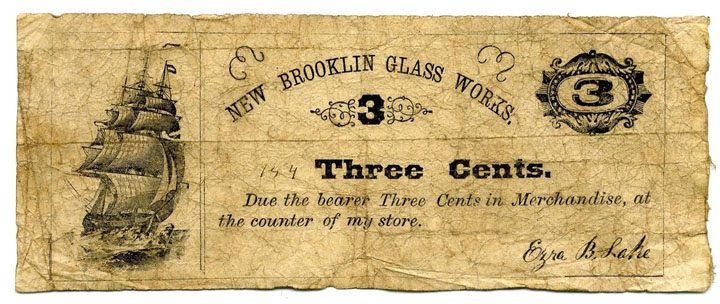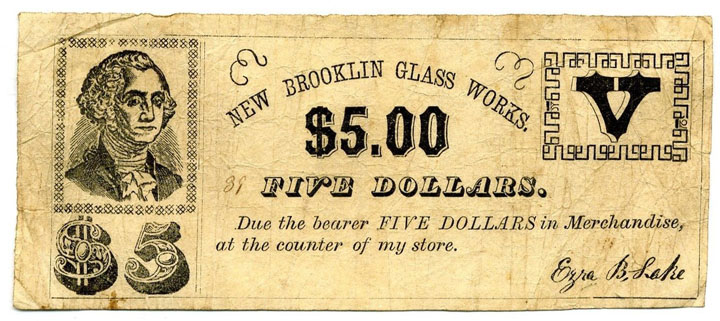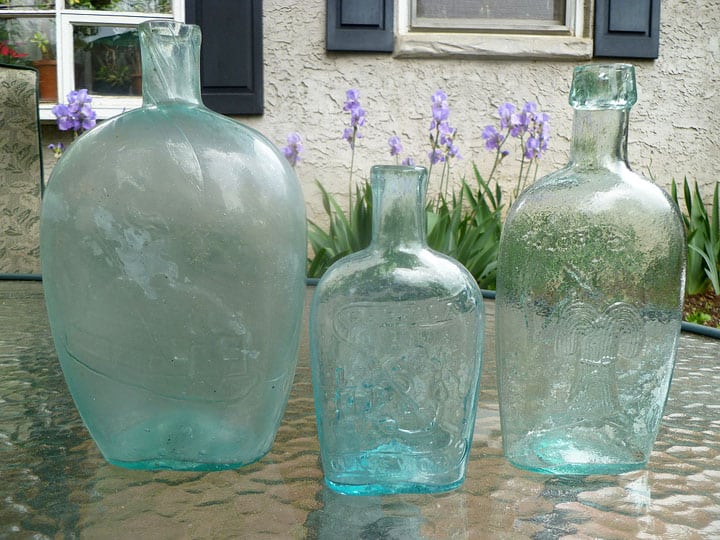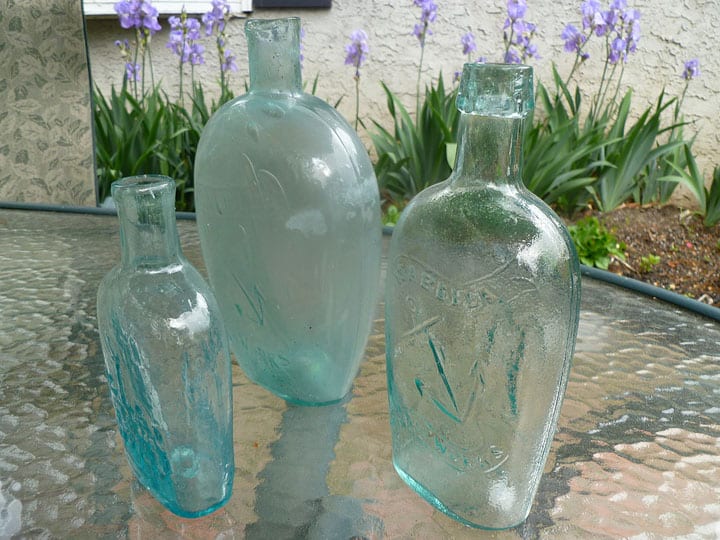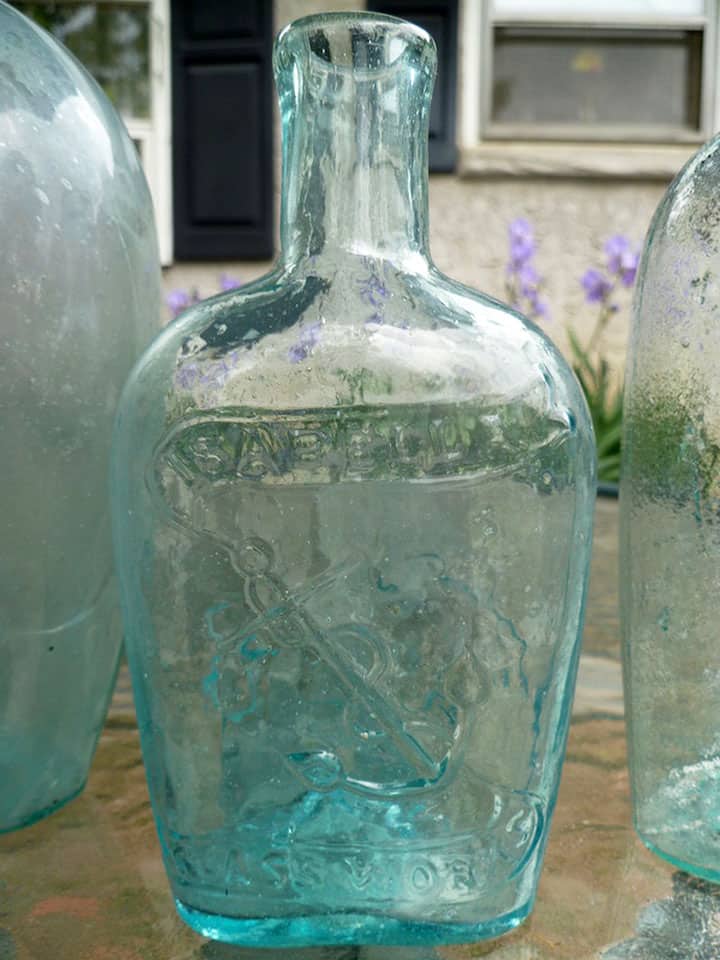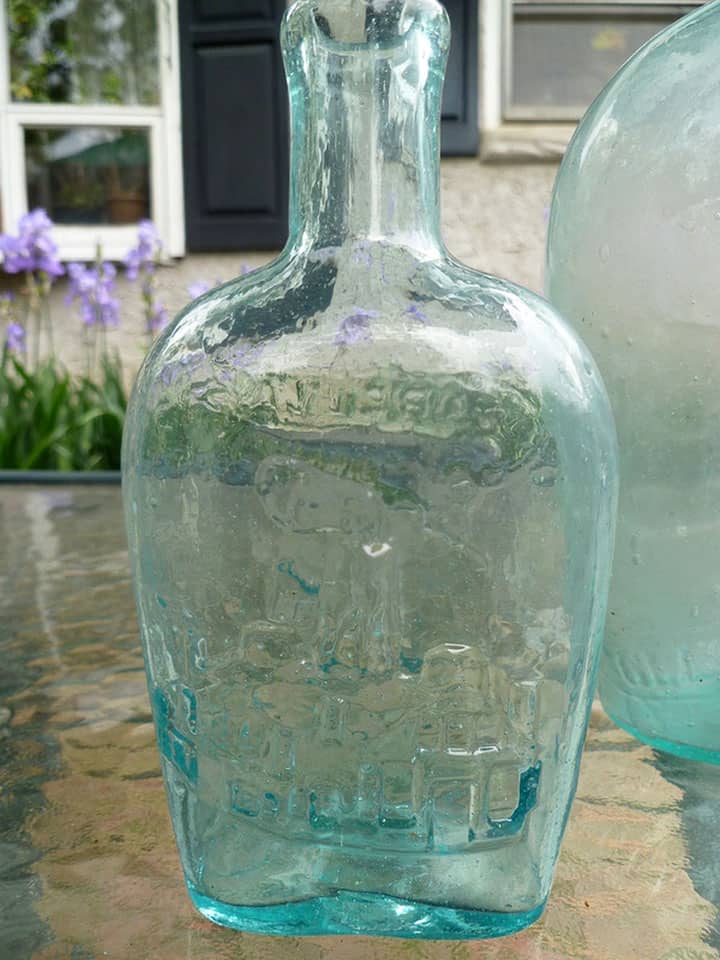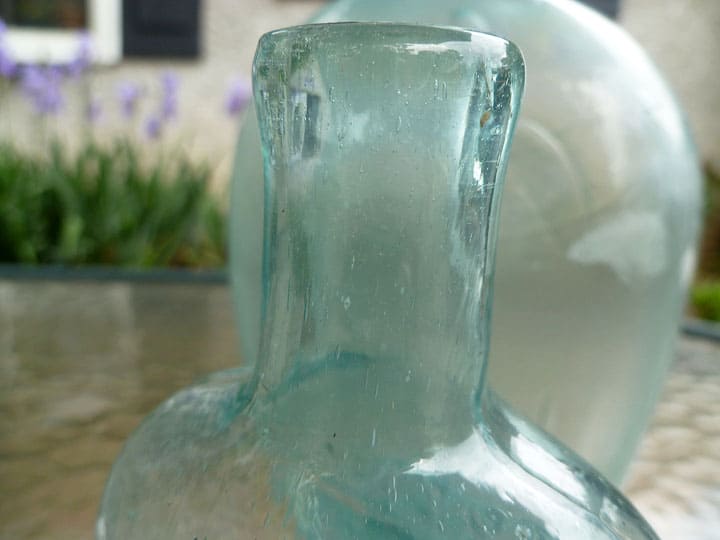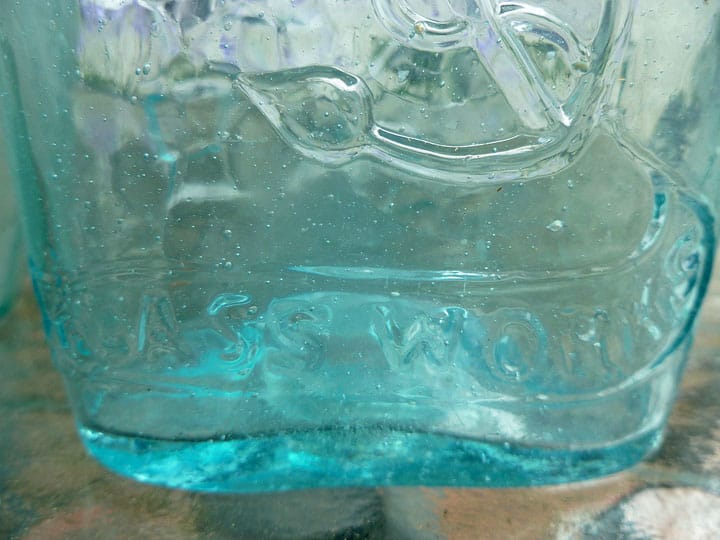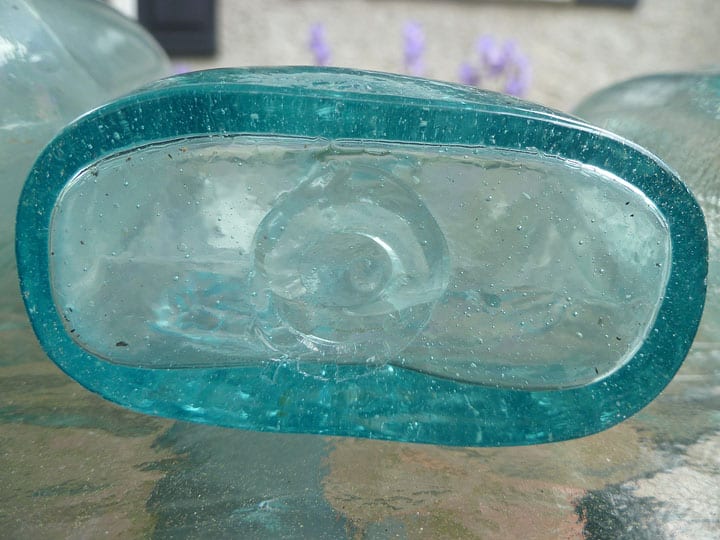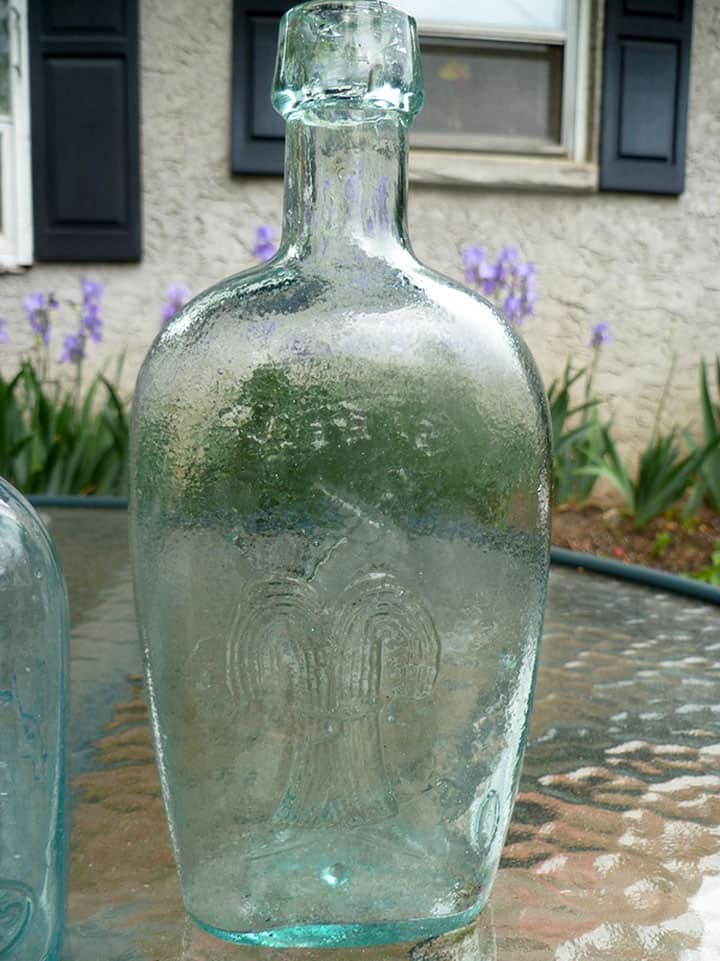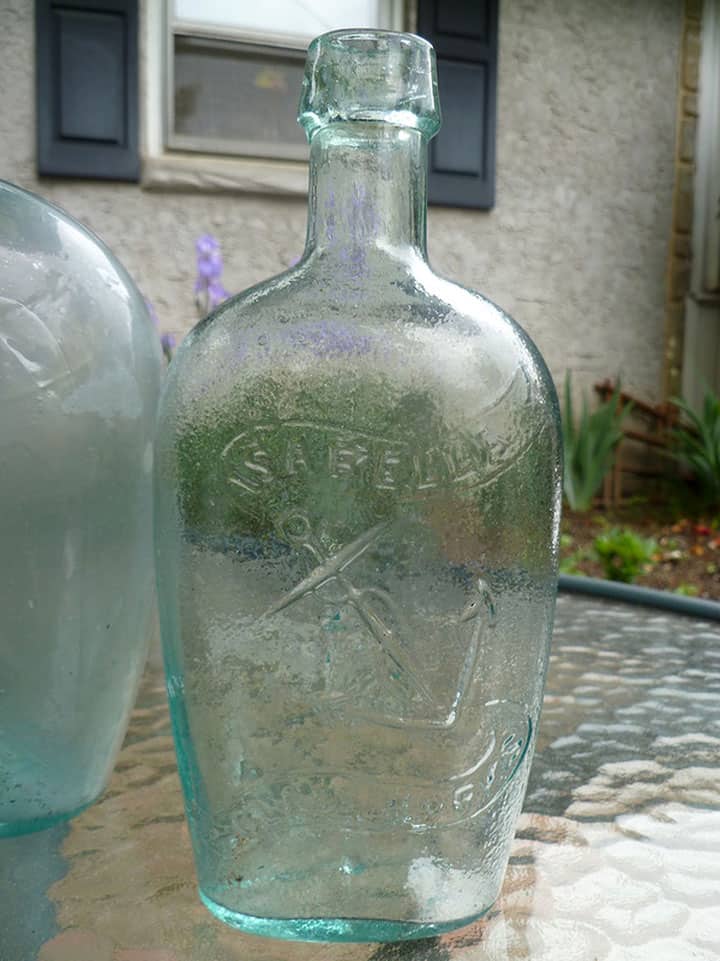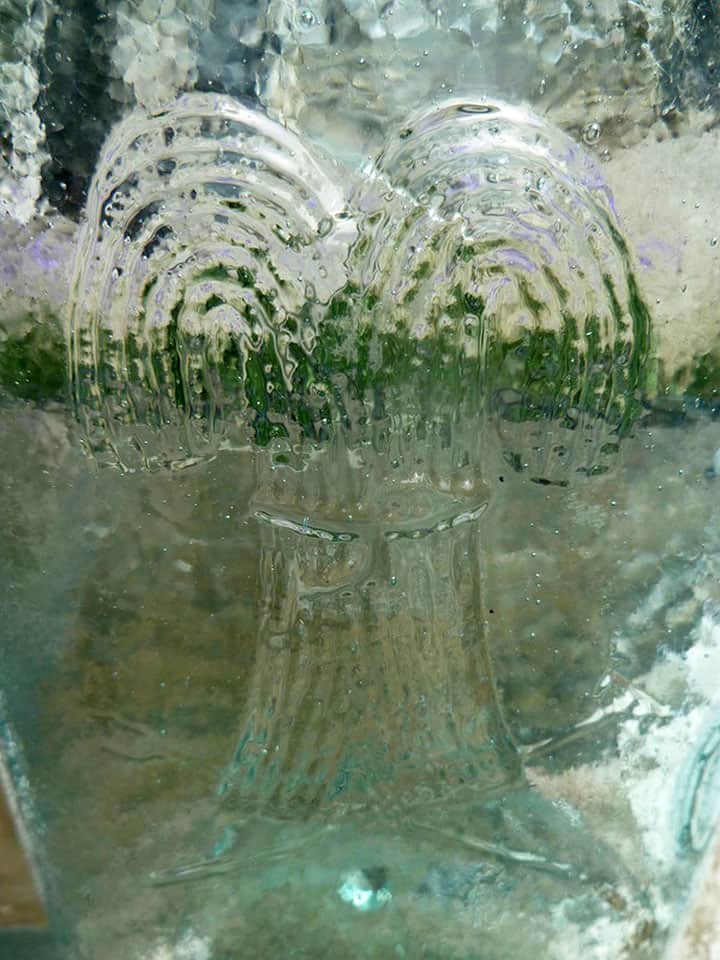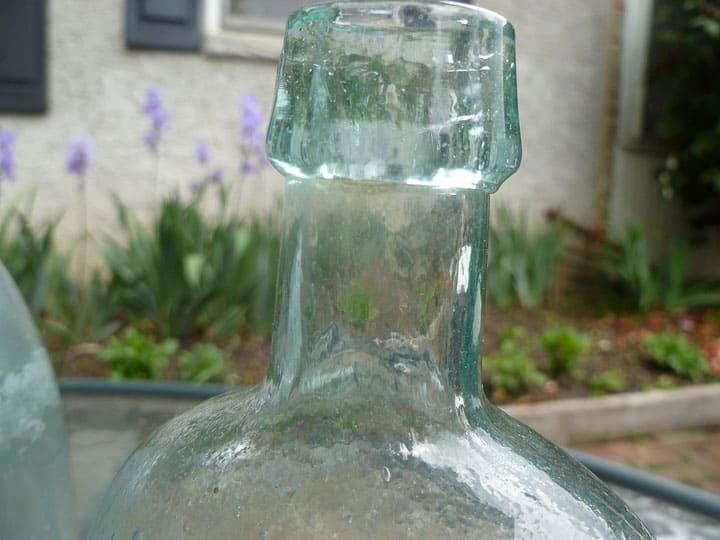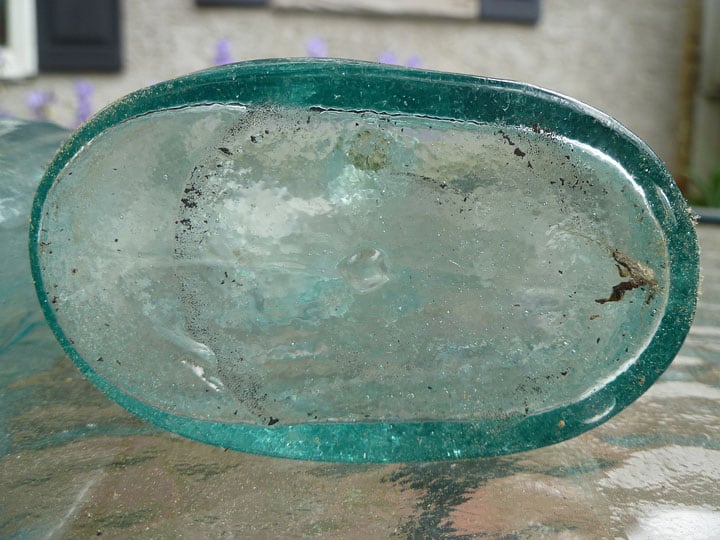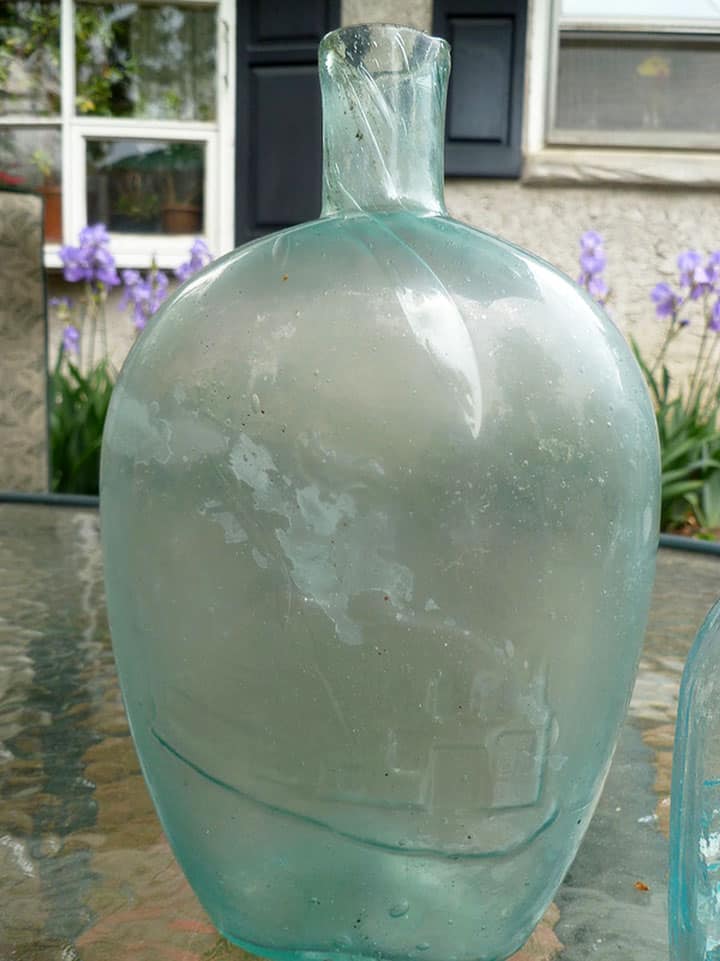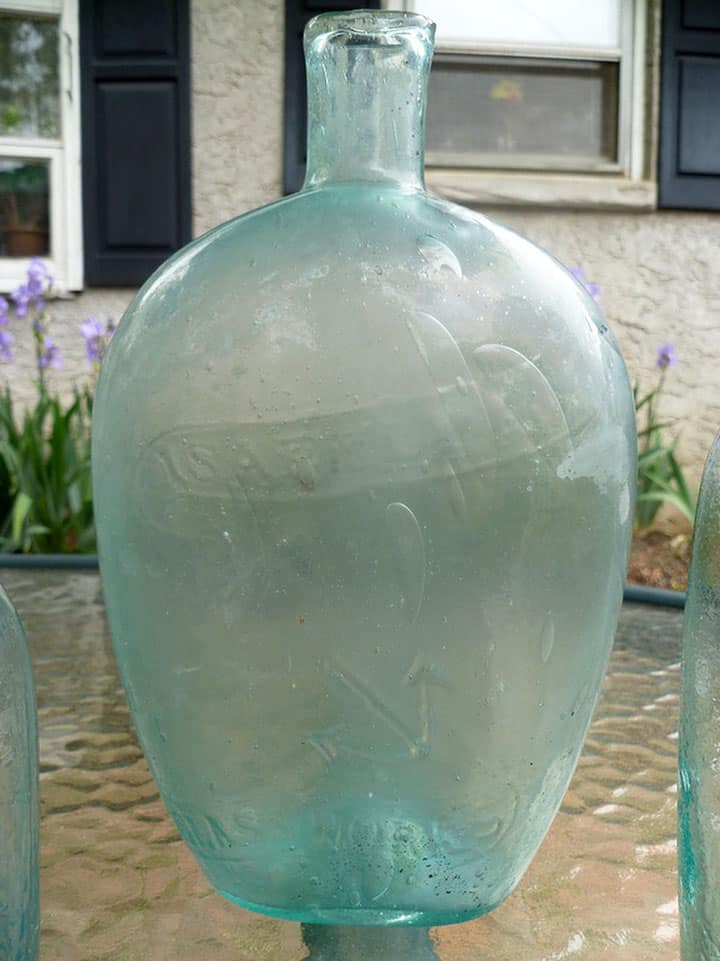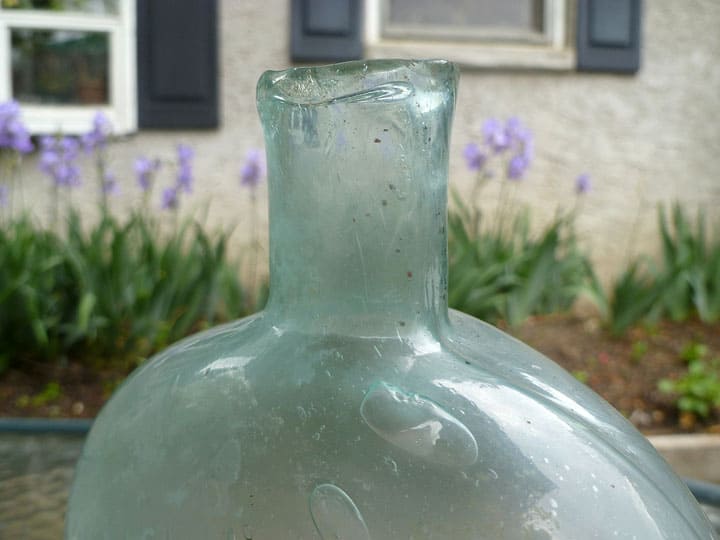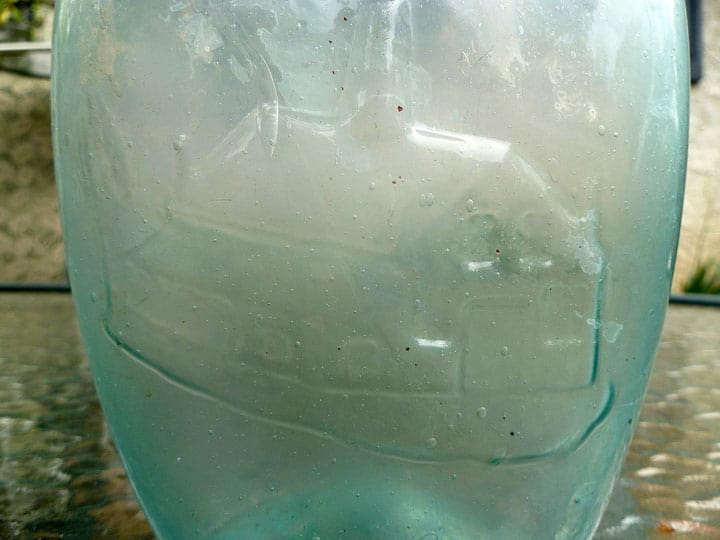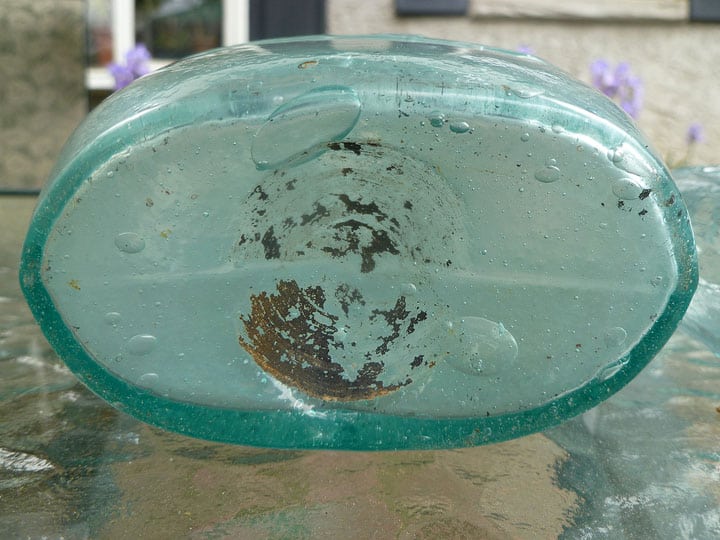The Isabella Glass Works of Thomas Stanger – 1841 to 1856
Part 3
by Stephen Atkinson
13 March 2014
Part 1: Frederick Stanger and John Marshall 1831-1832
Part 2: Thomas Wriggins Stanger and John Marshall 1832-1839
Thomas Stanger began building a new glass works containing 7 pots about a mile from the Brooklyn Glass Works in 1841 along present day Williamstown-New Brooklyn Road approximately one mile west of the Old Brooklyn Glass Works. Thomas and Elizabeth Marshall Stanger had three daughters; Isabella, Frances and Elizabeth, who died as a infant. Thomas Stanger named the glass works “The Isabella Glass Works” after his daughter Isabella. Another name of the factory was the New Brooklyn Glass Works, lending its name to the entire settlement.
In the year 1852, the glass works were called the New Brooklyn Glass Works to distinguish it from the original factory called “The Old Brooklyn Glass Works.” Glass blowing commenced at the New Brooklyn Glass Works on September 9, 1842. Below on this mid 1850s map of the Village of New Brooklyn, Thomas W. Stanger’s glass works are shown located along a small canal dug by Stanger. A sawmill, owned by George Marshall in 1828, is also shown along a large lake created on Four Mile Branch. Later in 1850, a company store opened by the lake. By 1854, over 100 people were employed at the glass works.
Company store money redeemable only at the store was issued to the workers of the glass factory and residents living in the village. Shown below are two quite rare Shin-Plasters from the mid 1850s.
Below are three historical flasks from my collection bearing the name Isabella that were made at the works between 1842 and 1865.
The oldest of the three flasks is the half pint pocket flask (below) charted by McKearin as the GXIII-57 and is listed as rare by them. This flask was blown between 1852 and 1855. On one side of the flask is a picture of a glass factory and on the reverse side is the lettered embossing ISABELLA GLASS WORKS in two banners and an anchor.
The next flask (below) made at the works was the GXIII-56. This flask was the pint sized variant and had a picture of a sheaf of wheat on one side and on the other the lettered embossing in two banners ISABELLA GLASS WORKS. This flask is also listed as rare by McKearin.
The last flask (below) bearing the name of the works is the quart sized McKearin charted GXIII-55. This is a large flask but thin walled. On one side of the flask again is a picture of a glass factory and on the reverse side the lettered embossing ISABELLA GLASS WORKS in two banners. This flask is listed as scarce by McKearin.

